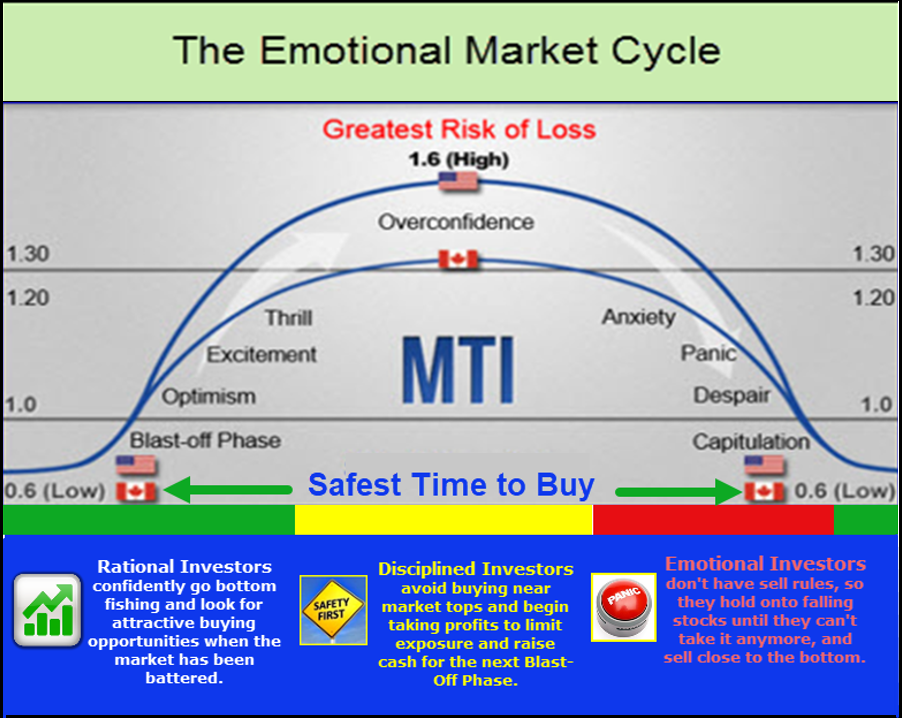Timing the Market is the first step in improving your investment results. VectorVest has proven it repeatedly with many studies and actual results. It just doesn’t pay to ignore the market’s trends.
The market has given most VectorVest investors substantial gains since the March 23rd market bottom. It didn’t matter if you got in early on the March 25th Primary Wave Up or if you waited for the more conservative DEW Up, which came on April 6th, you made good money. From there, protecting your gains becomes job #1.
This week, the market showed continued signs of overall weakness and volatility. Investors should have taken some profits before the downturn or at the start, shedding any falling positions and selling into strength on a few winners. The goal is to reduce exposure when the market is at extreme highs and starting to lose steam according to VectorVest’s key indicators. Many of our subscribers have done just that according to a quick survey I ran during our Tuesday Q&A.
But how do you know when it is time to play good defense and protect profits? Each week in my Tuesday Q&A, I show the current and historical MTI benchmark levels juxtaposed with The Emotional Market Cycle. If you Google “Emotional Market Cycle,” you will get about 1,000 different iterations. The one I use fits perfectly with the MTI, VectorVest’s Market Timing Indicator.
Here is how we read it.
THE MARKET BOTTOM PHASE
The Emotional Market Cycle identifies this as the Safest Time to Buy. VectorVest calls it the Blast-off Phase. It occurs when the MTI is near or below 0.60 and the BSR, or Buy to Sell Ratio, is near or below 0.20.
ACTION TO TAKE
Rational Investors confidently go bottom fishing and look for attractive buying opportunities when the market has been battered and starts to rise from these low levels.
The lower the MTI and BSR, the more explosive the bounce. After the COVID-19 collapse, the US market bottomed on March 23rd. The MTI was 0.22 and the BSR a rock bottom 0.02. Two days later, on March 25th, we got a Primary Wave Up signal. The DEW Up followed on April 6th. It was the Safest Time to Buy, and many stocks made high double-digit gains over the next weeks and months.
THE TRENDING AND MOMENTUM PHASE
The MTI is still rising, but the ascent is more gradual. It starts when the MTI is around 0.80 and runs until the MTI is around 1.20 to 1.30 in Canada and 1.50 to 1.60 in the US. Investors often turn from bottom fishing to blue chips and dividend payers during this phase.
As the market rises, emotions go from Optimism to Excitement and Thrill. Investor emotion is Overconfident when momentum begins to stall near the top. This is when investors are at the Greatest Risk of Loss.
ACTION TO TAKE
Disciplined Investors avoid buying near market tops and begin taking profits to limit exposure and raise cash for the next Blast-off Phase. The MTI can stay at high levels for a while, as it did during the recent cycle, but the longer it does, the more we should anticipate a sudden and steep decline and defend against it.
THE TRANSITION AND DEFLATION PHASE
This is where the market is at or near the topping levels and is turning from Bullish to Bearish. The MTI starts falling more steadily, hitting lower highs, often creating a divergence with the Price of the VectorVest Composite Canada, VVC/CA. As the MTI retraces from the highs to a new Market Bottom, the Emotional Market Cycle describes emotions going from Anxiety to Panic to Despair and finally Capitulation. Capitulation is when Emotional Investors sell close to the bottom because they can’t take the stress of losses piling up. Did this happen to you in March this year? What about 2018, 2017, 2015 and 2008?
ACTION TO TAKE
Avoid being the Emotional Investor who doesn’t have sell rules and continues holding on to falling stocks, losing their gains and selling right before the next Blast-off Phase.
A final word. To make good money consistently in the market, it helps to understand the relationship between THE MTI AND THE EMOTIONAL MARKET CYCLE.










Leave A Comment